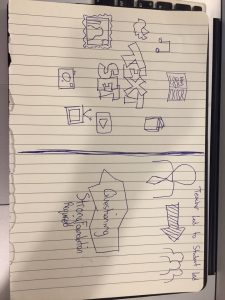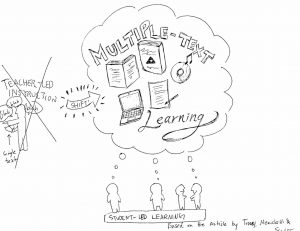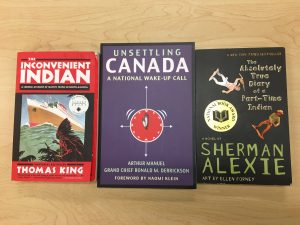Before this program, I was volunteering with my old high school teacher. She introduces her students to “The Communication Model” (I’ve linked it below!) as a tool to introduce them to a system and language to unpack/ deal with tense moments or miscommunication both in class and in their own lives. She knew she would be bringing in topics that would challenge students thinking, spark debate, and she wanted to have a proactive way to handle these sorts of situations.
Both she and I, through the course of the semester, saw how the model gave students a way to process other classmates perspectives and explain why they may be feeling one thing or why they may have said/ reacted to something..
My teacher, Lizanne Foster, had mats in her classroom with the words context, perception, interpretation, feeling, intention, and action written on it. Students would take her or each other to the mats to walk through and deal with conflict and to practice using the model. After a while they would know the steps and be able to think through the steps when speaking to one another, be kinder and be able to build bridges and grasp for understanding.
I have used this model in my own life, and have repaired relationships with my family and often think through the steps when there’s conflict in my own life. It is a way to be sympathetic to another person and try to understand why they may think the things they do. I got the opportunity to lead a workshop on this model with Lizanne and Cathy (who co-created the model with her late partner), and was so excited to see other teachers reach for it.
I was thinking of this model during our discussion in Friday’s class. I can see how we as literature teachers who will bring in challenging topics, could use a tool such as this to give students language to deal with more tougher ideas. Often times, these types of words seem simple and are over looked but they can really help students slowly think through moments of internal and external conflict with more clarity.



